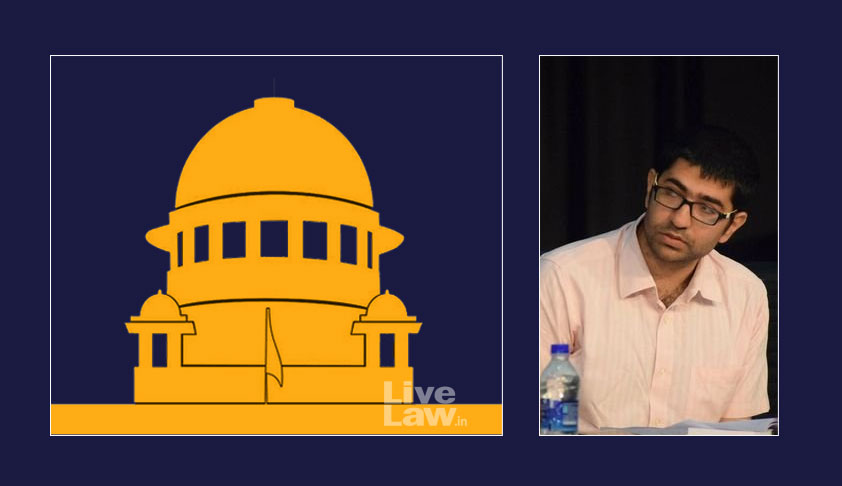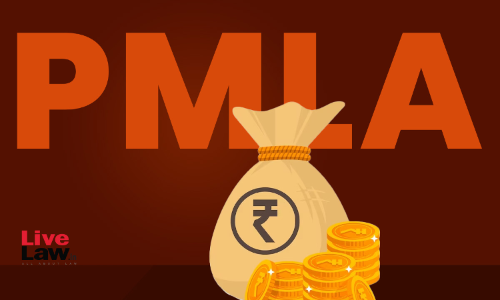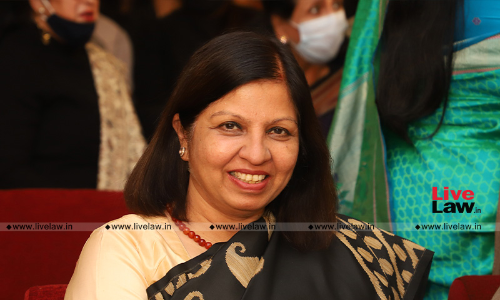The Supreme Court’s Right to Privacy Judgment – VII: Privacy and the Freedom of Speech

Last week, in a series of six essay, we discussed various aspects of what the Supreme Court did in Justice Puttaswamy vs Union of India. The Court held that there existed a fundamental right to privacy (essays I and II), that its elements were the bodily and mental privacy, informational self-determination, and decisional autonomy (essays III, IV, and V), and it also indicated the...
Last week, in a series of six essay, we discussed various aspects of what the Supreme Court did in Justice Puttaswamy vs Union of India. The Court held that there existed a fundamental right to privacy (essays I and II), that its elements were the bodily and mental privacy, informational self-determination, and decisional autonomy (essays III, IV, and V), and it also indicated the broad standards for limiting the right (essay VI). It is equally important, however, to discuss what the Court did not do. The Court did not hold that there existed a fundamental right to privacy horizontally (that is, between private parties), and the Court did not decide how it would adjudicate cases where there was a clash between privacy and other rights, such as the freedom of speech and the freedom of information.
Clarity on this point is important, because privacy has two uses: it can be used as a shield against intrusive State conduct (such as surveillance, data mining, or criminalisation of personal choices); and it can also be used as a sword against other individual rights. Examples of this include public figures citing privacy to block (potentially critical) books or films, and public information officers citing privacy to deny right to information requests. Over the course of the next couple of posts, I will show that the judgment in Puttaswamy was concerned only with privacy as a shield, and not with privacy as a sword. For the latter, there exists an evolving jurisprudence that remains untouched by Puttaswamy.
Privacy as a Horizontal Right
To start with, it is important to remember that the right to privacy has long been recognised as a “common law right” (in fact, the Union of India’s argued that privacy should remain only a common law right). As such, it was being applied between private parties, as an aspect of tort law, long before the issues in Puttaswamy became salient. On the other hand, the central question in Puttaswamy was whether privacy is a fundamental right under the Indian Constitution. This the judges answered in the affirmative.
It should therefore be clear that the very framing of the question precluded the Court from going into the specifics of privacy as a horizontal right, between private parties. The Court was precluded by the language of the fundamental rights chapter itself: apart from certain specific exceptions (such as Articles 15(2) and 17), the fundamental rights chapter operates vertically, regulating the relationship between the individual and the State. There is little doubt that the provisions within which the Court ultimately located the right to privacy (Articles 14, 19, 20(3), 21, 25) operate against the State. The separate opinions’ formulation of the limitations upon privacy were also directed at the State (the most important requirement that all the judges highlighted was the existence of a “law”). Consequently, Puttaswamy was simply not dealing with issues such as unauthorised biopics (freedom of expression v privacy), or right to information requests.
There is a limited exception to this: the Court has often held (most recently in the liquor ban cases) that Article 21 does not merely prohibit the State from taking away an individual’s life or personal liberty without due process, but often requires the State to act affirmatively and protect life and personal liberty. We find this issue discussed in the plurality opinion of Justice Chandrachud and the separate opinion of Justice Kaul, in the limited context of data protection. Both Justice Chandrachud and Justice Kaul argued that the issue of data collection and data mining was an extremely complex one, and individual’s rights could only be protected by a detailed data protection law, enacted by Parliament. Notably, the Justices made it clear that the obligation was Parliament’s alone.
There is an important distinction, however, between the Court stating that Parliament had an obligation to pass a law under Article 21 that adequately protected individual rights to informational self-determination (which it did), and the Court holding that individuals could invoke the Constitution in private disputes against private parties to vindicate their privacy rights (which it did not) (although, in the context of privacy, the Court has been rather unclear about this distinction, and created messy jurisprudence as a result). In fact, the Court could not have done the latter, not only because it was entirely outside the scope of the referral questions, but also because that would amount to rewriting the Constitution.
Privacy and Free Speech
However, in the view of some scholars, there exist various observations in Justice Kaul’s separate opinion, which might undermine this position – and specifically, subordinate free speech to privacy. To start with, let us remember that Justice Kaul’s is a separate opinion which did not, by itself, carry a Majority of the Court. More importantly however, in my view, Justice Kaul did not, at any point, endorse the view that privacy qua a fundamental, constitutionally guaranteed right, can be applied horizontally. In paragraph 12, he observed that privacy may be claimed against State and non-State actors, and in the latter case, there may be need for legislative regulation. He specifically addressed the issue of privacy claims against non-State actors (paragraphs 15 – 22), which was focused exclusively on data mining and data collection by corporate giants.
It was at a much later point in the judgment, while dealing with privacy as the right to informational self-determination, he observed:
“An individual has a right to protect his reputation from being unfairly harmed and such protection of reputation needs to exist not only against falsehood but also certain truths. It cannot be said that a more accurate judgment about people can be facilitated by knowing private details about their lives – people judge us badly, they judge us in haste, they judge out of context, they judge without hearing the whole story and they judge with hypocrisy. Privacy lets people protect themselves from these troublesome judgments… which celebrity has had sexual relationships with whom might be of interest to the public but has no element of public interest and may therefore be a breach of privacy.” (paragraphs 56 and 57)
And:
“Every individual should have a right to be able to exercise control over his/her own life and image as portrayed to the world and to control commercial use of his/her identity. This also means that an individual may be permitted to prevent others from using his image, name and other aspects of his/her personal life and identity for commercial purposes without his/her consent.” (paragraphs 58)
While these paragraphs have caused some disquiet, when read objectively, they lay down two entirely innocuous propositions, that are accepted in jurisdictions across the world. The first proposition is that private life cannot be invaded unless there is an element of public interest involved. The second proposition is that private life cannot be commercialised without consent. Notice that, judicially interpreted, neither of these propositions will stifle (to take, once more, the central example) biopics, documentaries, or biographies of public figures: as Justice Kaul made clear through his celebrity-sexual relationship example, the primary factor in determining whether there has been an actionable breach of privacy is whether there is an element of public interest involved in the disclosure of what is claimed to be “private information.” This is an accepted standard in, for example, the ECHR, as well as in South Africa. To get a taste of how it might work in practice: South African courts have held that publishing compromising photographs of a pair of well-known lawyers was a breach of privacy, because although the lawyers were indeed “public figures”, there was no “public interest” in broadcasting to the world what they did in their private lives. On the other hand, when a minister who was undergoing rehabilitation therapy went on a binge, knowledge of that fact was held to be in the public interest, because the public was certainly entitled to know and judge for themselves whether such conduct from a public servant was responsible or not.
What this shows us is that it is the task of the Courts to fashion a jurisprudence that balances privacy rights, public interest, and the right to freedom of expression (as multiple other Courts are doing, and have done). This would require courts to define ambiguous phrases such as “public interest” and “commercialisation”, with a view to the larger issues involved. Puttaswamy does not decide the questions, or even indicate how that balance may be achieved: it wisely leaves that determination to future courts.
Puttaswamy also has nothing to say about another vexed issue, that has caused a split in various High Courts over the last two decades, ever since the judgment of the Supreme Court in R. Rajagopal vs State of Tamil Nadu: the question of whether a privacy claim can be used to injunct a book or a film, and stop it from entering the public sphere; or whether the only remedy for a breach of privacy is monetary compensation, after publication. In Khushwant Singh vs Maneka Gandhi – a judgment authored by Kaul J himself, when he was a judge of the Delhi High Court, it was clearly held that because privacy disputes between two individuals took the form of tort claims, and not constitutional claims, an injunction could not be granted:
“The interim order granted by the learned Single Judge is a pre-publication injunction. The contents of subject matter had been reported before and the author stands by the same. In view of this we are of the considered view that the respondent cannot make a grievance so as to prevent the publication itself when the remedy is available to her by way of damages.“
The Court then noted:
“An important aspect to be examined is the claim of right of privacy advanced by the learned counsel for the respondent to seek the preventive injunction.This aspect was exhaustively dealt with in the case of Auto Shankar reported as R.Rajagopal’s case (supra) . The Supreme Court while considering these aspects clearly opined that there were two aspects of the right of privacy. The first aspect was the general law of privacy which afforded tortuous action for damages from unlawful invasion of privacy. In the present case we are not concerned with the same as the suit for damages is yet to be tried. The second aspect, as per the Supreme Court, was the constitutional recognition given to the right or privacy which protects personal privacy against unlawful governmental action. This also is not the situation in the present case as we are concerned with the inter se rights of the two citizens and not a governmental action. It was in the context of the first aspect that the Supreme Court had given the illustration of the life story written – whether laudatory or otherwise and published without the consent of the person concerned. The learned counsel for the respondent Mr. Raj Panjwani, sought to draw strength from this aspect i.e., the lack of consent of the respondent to publish her life story in the autobiography written by appellant no.1. However, this will give rise to tortuous action for damages as per the Supreme Court since this is the aspect which is concerned with the first aspect dealt with by the Supreme Court in respect of the invasion of privacy.”
And then:
“The remedy would thus be by way of damages and not an order of restraint.”
On the other hand, the Madras High Court did injunct the publication of a biography of Jayalalithaa on privacy grounds, also relying upon certain ambiguous formulations in R. Rajagopal vs State of Tamil Nadu. At the present moment, therefore, there exists a split in the jurisprudence on this point. It would take us too far afield to commence a discussion on why the Delhi High Court was right, and the Madras High Court wrong (I have dealt with the issue in some detail in Chapter Eight of my book, Offend, Shock, or Disturb: Free Speech under the Indian Constitution); the limited purpose of this post is to reiterate that in Puttaswamy, the Supreme Court was concerned with identifying and locating privacy as a fundamental right within the Constitution. This leaves entirely open the questions pertaining to balancing privacy and free speech when these interests clash with each other in a private setting. That jurisprudence will need to be evolved on an incremental basis, through litigation in the High Courts (or the Supreme Court), and hopefully in a progressive direction.
Gautam Bhatia is a lawyer practicing in Supreme Court of India. This Article was first published in his blog Indian Constitutional Law And Philosophy.





